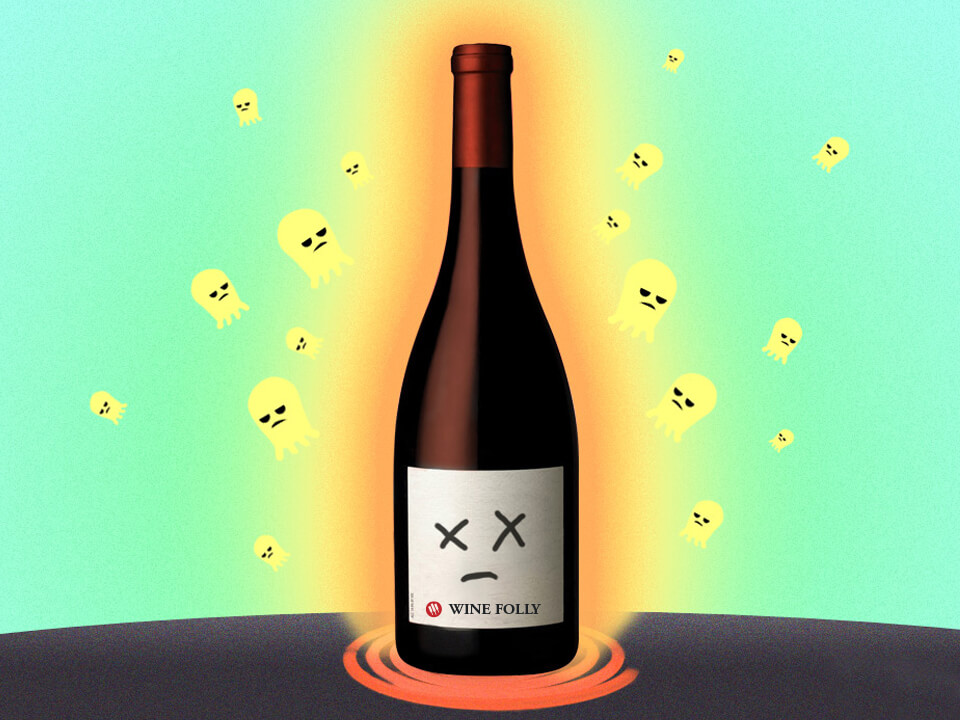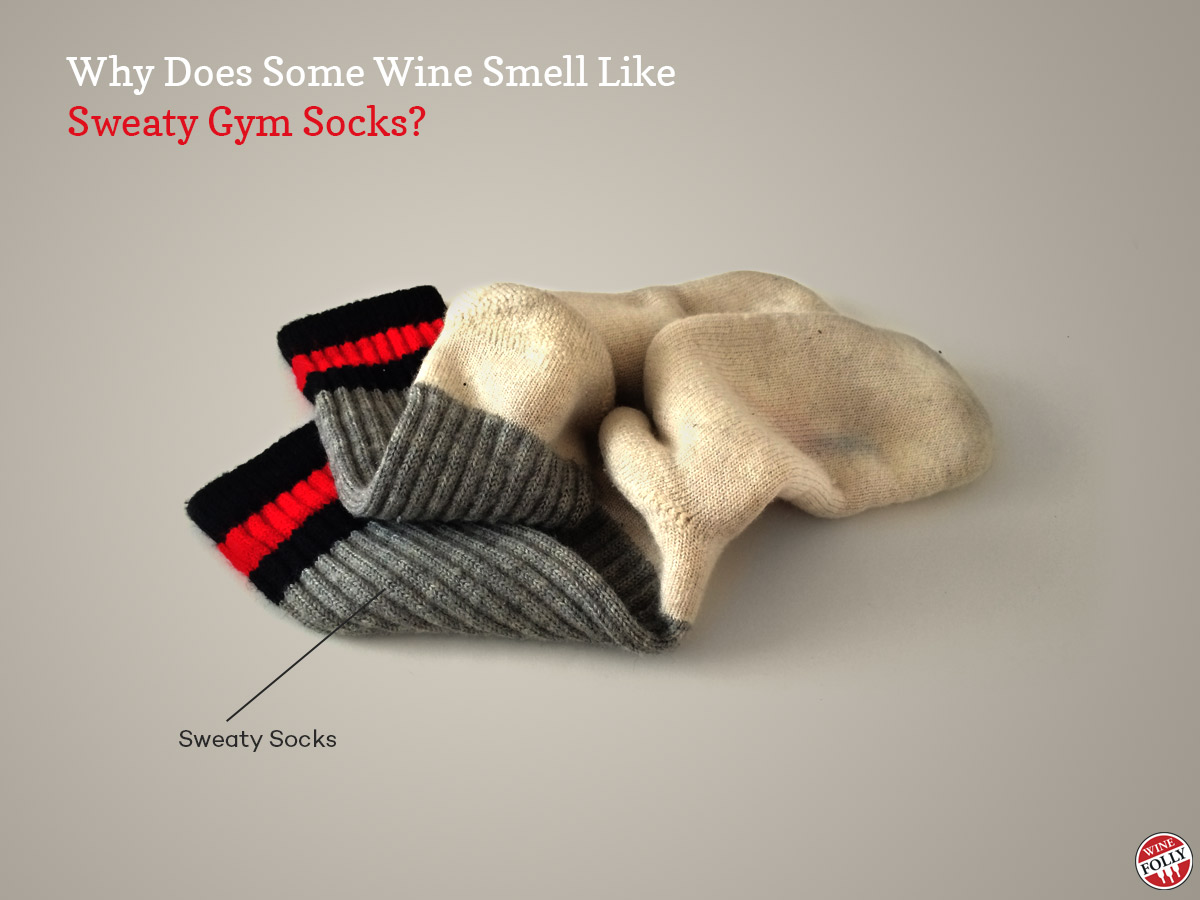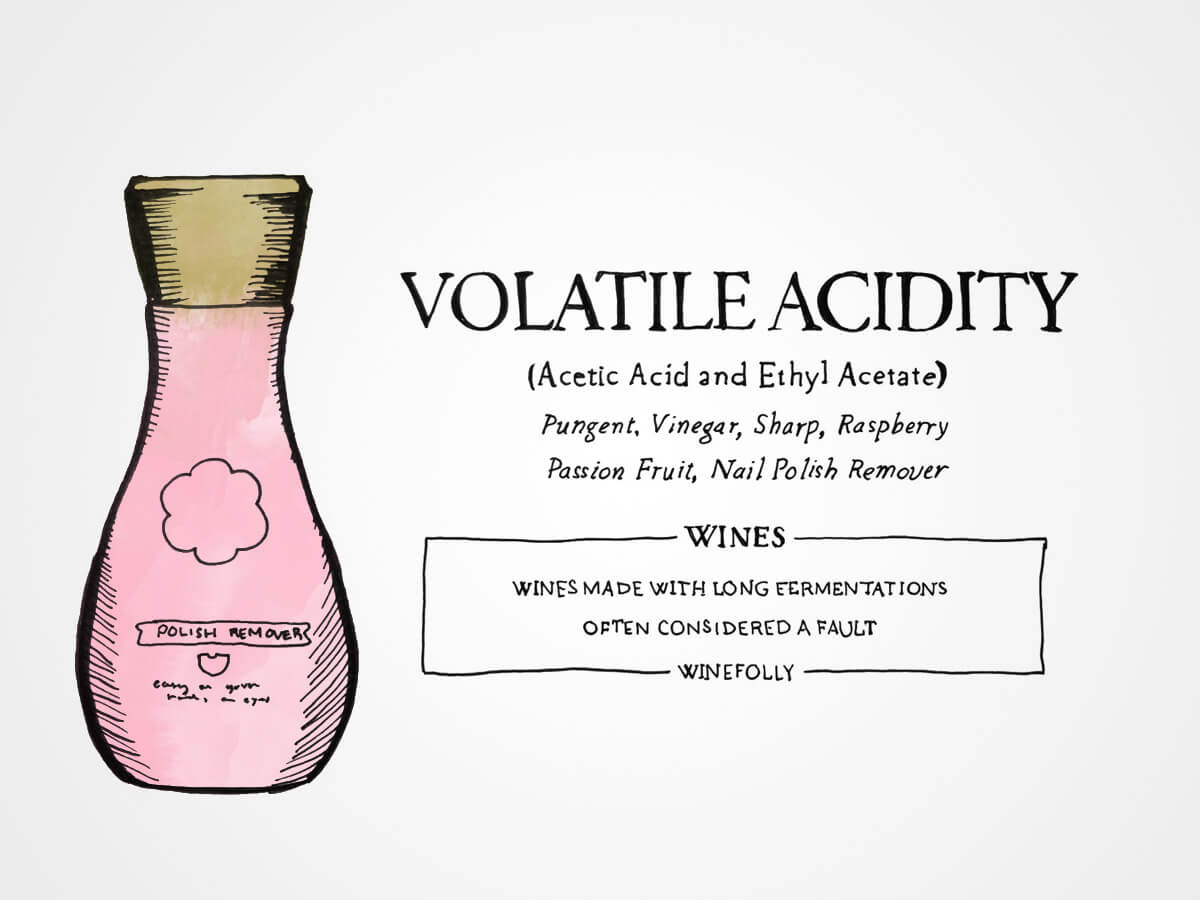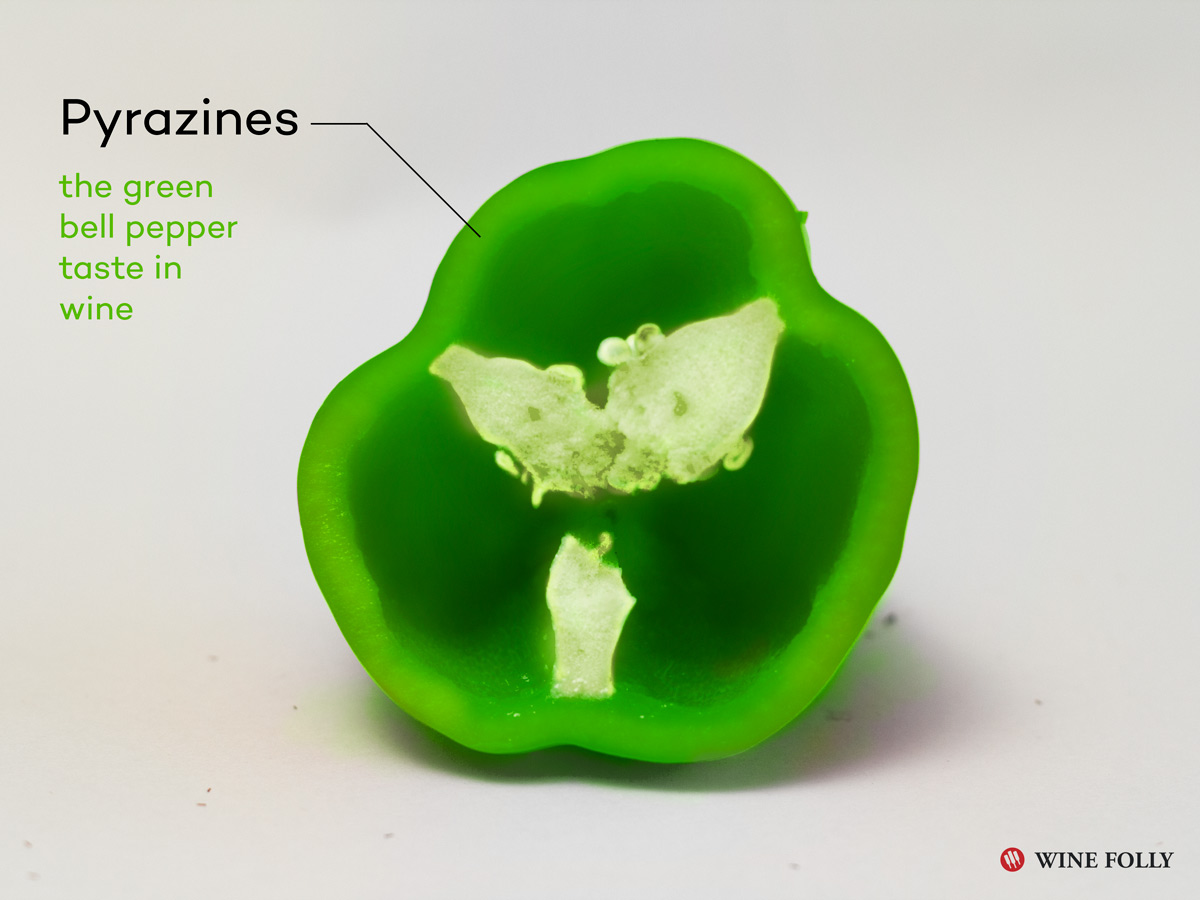In tasting wine, it’s helpful to know to pick out the good from the flawed. This can be a tricky pursuit, since (ideally) we don’t often come across examples of various wine flaws. After all, each person has a different natural threshold of perception.
In wine there are 7 primary flaws. But what’s interesting is that winemakers can often use some of these flaws to benefit the wine or create different flavors. Today, we’ll go over 5 of those very faults.
Of course, sometimes a flaw really is a flaw, so we’ll also teach you how to spot the difference.

Oxidation
Exposure to oxygen causes oxidation. When it’s done intentionally, winemakers allow a moderate amount of air to interact with the wine during the winemaking process.
This is usually prevented by topping up barrels as some of the wine evaporates. Oxidative winemaking typically forgoes this step.
What Oxidation Tastes Like in Wine
Oxidative wines are all about umami–the oxidation process actually causes an increase in glutamate, an acid related to MSG. Earthy, nutty, yeasty, and savory aromas mark these savory and intriguing wines. A dried fruit character is also usually present.
Using Oxidation as a Benefit
Many white wines in France’s Jura region, known as sous voile wines, use this technique. This includes the region’s complex and delicious signature wine, Vin Jaune. This is also used for Oloroso styles of Sherry, as well as Tawny Port, Madeira, Rancio Sec, and some old-school white Riojas.
Many orange wines use oxygen exposure during the skin-contact stage in open-top fermenters.
When Oxidation is a Wine Flaw
When careless or unsanitary winemaking exposes the wine to oxygen during fermentation or aging. It’s also a problem when a cork’s seal leaks due to improper storage.
If you notice faded, dried-out, or cooked fruit aromas and a brownish hue on everyday red and white wines or young vintages you might be suspicious.

Heat
In Madeira, the Estufagem process, used for inexpensive wines, involves heating the wine in temperature-controlled tanks. For higher-end wines, the Canteiro process allows the sun to heat barrels stored under the rafters of warm winery attics.
Because of these methods, unintentionally heated wine is often referred to as “Madeirized” or just “cooked.”
What Cooked Wine Tastes Like
Heat is often used in tandem with or in place of oxidation, and creates similar results. Typical aromas include dried fruit, spice, roasted nuts, cocoa, fruitcake, and smoke. Estufagem wines tend to show some burnt caramel character.
Using Heat as a Benefit
Madeira is a great place to start. Heat is also used to produce Rancio Sec, a Sherry-like wine made on both sides of the French-Catalan border, often from variations of the Garnacha grape.
Because they are already “cooked,” these wines have the added bonus of being virtually immortal once opened.
When Heat is a Wine Flaw
Wine can be accidentally heated when stored somewhere that is too warm. This can also occur when shipping in hot weather without proper temperature controls. This can cause wines that would otherwise be fresh and vibrant to have a cooked or cloying roasted fruit flavor.

Brettanomyces
Brettanomyces, or “brett,” is a strain of wild yeast introduced naturally to wine in the cellar. Some wineries simply choose not to prohibit its development and see it as part of their “house style.”
This ambient yeast can be anywhere: on the winemaking equipment, in the barrels, even on the grapes themselves. This means that it can be quite difficult to control.
What Brettanomyces Tastes Like
Brett can make wine smell and taste a bit like, well, a barnyard. Or a sweaty saddle. Or old socks, Band-Aids, wet dog, or cured meat. Wines with brett are often described as “funky;” this can either be a compliment or an insult.
The key to “good” brett is moderation. While some people can’t tolerate it in any concentration, others find a small dose of it adds complexity and character.
Using Brettanomyces as a Benefit
There are no hard and fast rules, but there are instances where winemakers allow brett to exist in moderation. For example, many wines of the Southern Rhône, some Italian Barbera and Sangiovese wines, and wines made by a few old-school Napa and Bordeaux producers, especially from older vintages.
Some natural wines, without the protection of sulfur, can also be vulnerable to brett.
When Brettanomyces is a Wine Flaw
At its worst, brett is a symptom of microbial spoilage, sometimes due to lack of cleanliness in the winery. While brett can be appealing in some red wines, it is definitely considered a flaw in white and sparkling wines.
It’s also problematic whenever it is so overwhelming that the wine lacks all other character. At the end of the day, brett is a debate you can have with your closest friends.

Volatile Acidity
Volatile acidity, or VA, comes from the acids in wine that occur in the form of gas, rather than liquid. This makes VA perceivable by smell. This can result from excess exposure to oxygen during the winemaking process, enabled by a type of bacteria called acetobacter.
The most common acid in wine is acetic acid, otherwise known as vinegar.
What Volatile Acidity Tastes Like
Unsurprisingly, wines with VA can taste a bit like vinegar: but sometimes in a good way. Think of a fine balsamic, or even kombucha. In small doses, this can add a pleasing tartness and fruitiness. It also offers heightened character and complexity.
Using Volatile Acidity as a Benefit
It’s hard to pinpoint where you might find VA in a wine! But if you see the words “lifted” or “high-toned” in a wine description, that may be a clue. It’s also more common in sweet wines (especially when botrytis is present) or those made from dried grapes.
So look for it in Port, Sauternes, or Amarone della Valpolicella. VA is also more likely to occur in wines made in older barrels or fermented in oxidative environments.
When Volatile Acidity is a Wine Flaw
When there’s too much VA in the mix, wines can smell a bit like paint thinner or nail polish remover. It’s especially pronounced when a wine does not have enough tannin, body, or alcohol to stand up to VA’s intensity.
By the way, some sniffers have incredible sensitivity to VA compared to others! So again, with this flaw, it’s very much an “eye of the beholder” thing.

Pyrazine
Pyrazine (methoxypyrazine) is a chemical compound that occurs in certain grape varieties, causing herbaceous aromas and flavors. It is particularly common in Sauvignon Blanc, Cabernet Sauvignon, Cabernet Franc, and Carménère, especially when unripe, and can be desirable in small amounts.
Winemakers who want a bit of pyrazine character choose to harvest these varieties on the early side.
What Pyrazine Tastes Like
Pyrazines tend to taste “green.” They run the gamut from green bell pepper to freshly cut grass to gooseberries to canned asparagus. A bit of pyrazine can be attractive to those who enjoy a bit of an herbal quality in their wine.
Using Pyrazine as a Benefit
Pyrazine is a signature of New Zealand Sauvignon Blanc, particularly in the Marlborough region. It’s best known for giving these wines a distinctive grassy character. It also makes appearances in some cooler-vintage Bordeaux and Napa Cabs, as well as many Loire Valley Cabernet Francs.
It’s more likely to make an appearance in cool-climate wines in general.
When Pyrazine is a Wine Flaw
When the bell pepper flavors are so overwhelming that the wine tastes unbalanced. Like brettanomyces, this very much comes down to individual preference!
Wine Flaws are in the Eye of the Beholder
Armed with this knowledge, you can begin to experiment with “flawed” wines to recognize their characteristics. Work to determine your preferences when it comes to aromas and flavors like brett and pyrazine!
You can also start to identify when these flaws really are problematic and you need to send a wine back.
If you want to get really nerdy about it, we recommend Jamie Goode’s book Flawless: Understanding Faults in Wine for an approachable and informative deep dive into the world of wine faults.
And for an interactive sensory experience, the Nez du Vin wine faults kit contains scented vials of the 12 most common flaws found in wine.
Are there some wine flaws that you enjoy that we’ve missed? Let us know!


